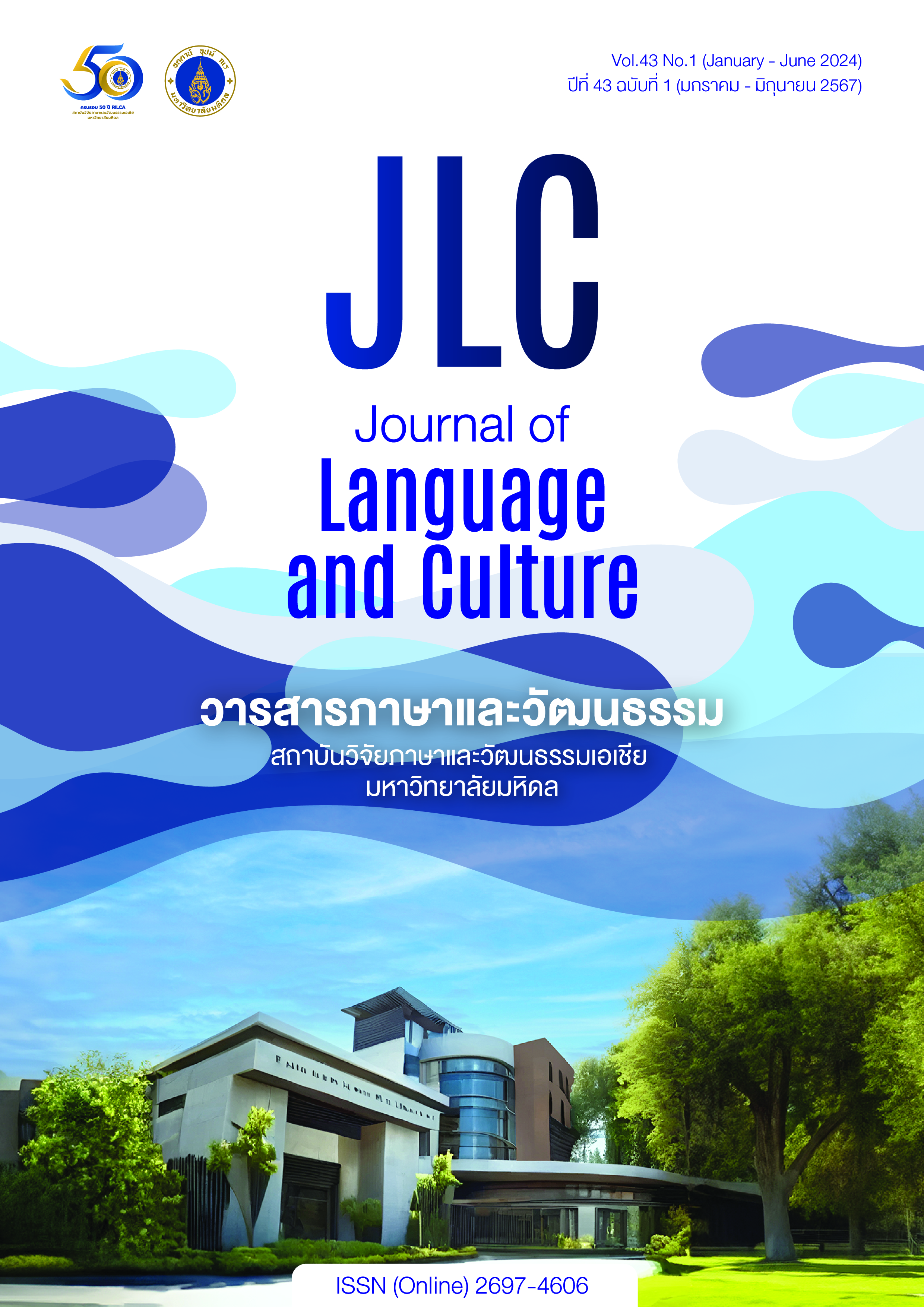Aesthetic movements: Drawing choreographic inspirations from Thailand's Prasat Phanom Rung
Main Article Content
Abstract
This investigation, encapsulated within the broader research entitled "An Analysis of Creative Dance from Iconographic Concepts in Buri Ram Province with Laban Notation's Theory," delves into the intricate synergy between architectural symbolism and the art of dance, with a specific focus on the emblematic Prasat Phanom Rung in Thailand. The core objective of this study is to elucidate the ways in which the castle's unique architectural elements serve as a muse for the creation of dance movements, thereby weaving a narrative thread that connects the historical and architectural legacy of the site with contemporary dance practices. Central to this exploration is the formulation of a dance framework that is deeply ingrained in the castle's iconic motifs, alongside the meticulous selection of dancers who possess the interpretative skill and expressive capacity to embody these motifs. Furthermore, this research conducts a rigorous analysis of movement, aiming to mirror the rich iconography of the castle through the language of dance. This endeavor is pivotal in illustrating the role of cultural heritage and historical motifs as a driving force behind the evolution of dance, marrying ancient themes with the nuances of modern choreographic methodologies. Consequently, this study contributes a novel perspective to interdisciplinary artistic research, spotlighting the capacity of dance to function as a vibrant conduit for cultural storytelling and preservation. The fusion of cultural legacy with choreographic ingenuity underscores a distinctive addition to the disciplines of dance and cultural studies, emphasizing the vibrant dialogue between tangible history and the realm of performing arts.
Article Details

This work is licensed under a Creative Commons Attribution 4.0 International License.
The articles featured in the Journal of Language and Culture (JLC) constitute academic works representing the viewpoints of the respective author(s). It is crucial to note that these opinions do not necessarily reflect those of the Editorial Board.
All articles published in JLC are released under the Creative Commons Attribution 4.0 International License (CC BY 4.0). This license grants permission for unrestricted use, distribution, and reproduction in any medium, provided proper credit is given to the original author(s) and the source.
References
Aamodt, C., & Soar, K. (Eds.). (2014). Archaeological Approaches to Dance Performance. British Archaeological Reports.
Achuthananda, S. (2018). The Ascent of Vishnu and the Fall of Brahma: The Galaxy of Hindu Gods. Relianz.
Brandstetter, G. (2015). Poetics of Dance: Body, Image, and Space in the Historical Avant-Gardes. Oxford University Press.
Burridge, S., & Roche, J. (2022). Choreography: The Basics. Routledge.
Butterworth, J., & Wildschut, L. (Eds.). (2017). Contemporary Choreography: A Critical Reader. Routledge.
Colón, A. R., & Colón, P. A. (2017). Iconography: An Irreverent Introduction. Colón.
DeFrantz, T. F., & Rothfield, P. (2016). Choreography and Corporeality: Relay in Motion (New World Choreographies). Palgrave Macmillan.
Diskul, M. C. S. (1974). Establish the Age of the Prasat Phanom Rung. Fine Arts Department of Thailand.
Fine Arts Department. (1988). Prasat Phanom Rung. Fine Arts Department of Thailand.
Flatt, K. (2019). Choreography: Creating and Developing Dance for Performance. The Crowood.
Franklin, E. (2013). Dance Imagery for Technique and Performance. Human Kinetics.
Freeman, M. (1998). Prasat Phnom Rung & Muang Tam. River Books.
Gaston, A.-M. (1983). Siva in Dance, Myth, and Iconography. Oxford University Press.
Gopinatha Rao, T. A. (2012). Elements of Hindu Iconography. Ulan Press.
Keister, D. (2014). Stories in Stone: A Field Guide to Cemetery Symbolism and Iconography. Gibbs Smith.
Noikhonburi, W. (2017). Event Management of 'Phanomrung Mahatewalai', Light and Sound Production (Unpublished master's thesis). Chulalongkorn University.
Sangkhakul, K. (2016). The Phanom Rung Mountain Festival as a 'Creative Tradition' in Contemporary Thai Society (Unpublished master's thesis). Chulalongkorn University.
Stutley, M. (2019). The Illustrated Dictionary of Hindu Iconography. Routledge.
Venkatraman, P. (2015). A Time to Dance. Nancy Paulsen Books.Woodward, H. (2005). The Art and Architecture of Thailand: From Prehistoric Times Through the Thirteenth Century. Brill Academic.
Wynne-Jones, V. (2021). Choreographing Intersubjectivity in Performance Art (New World Choreographies). Palgrave Macmillan.


